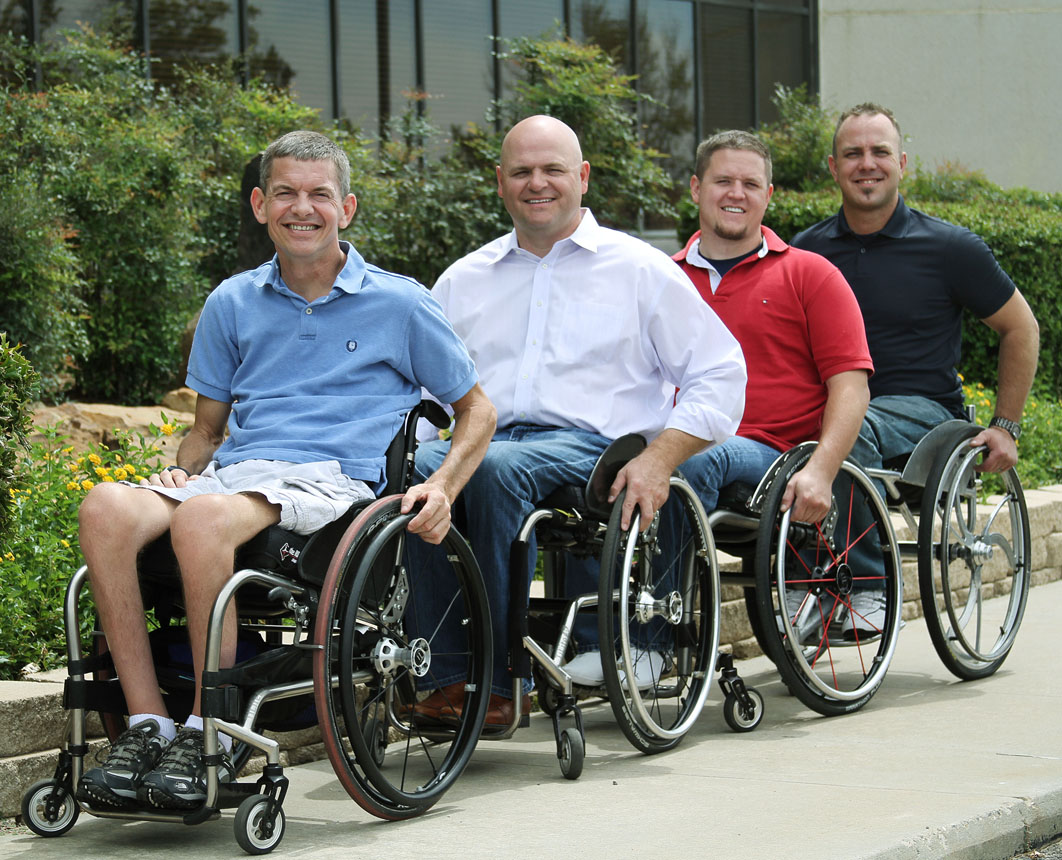 At 180 Medical, we do whatever it takes to ensure our customers have all the information they need to feel comfortable using their catheter supplies and living with their specific medical conditions. Let’s go over a few of the most frequently asked questions (FAQs) about living with a spinal cord injury (SCI).
At 180 Medical, we do whatever it takes to ensure our customers have all the information they need to feel comfortable using their catheter supplies and living with their specific medical conditions. Let’s go over a few of the most frequently asked questions (FAQs) about living with a spinal cord injury (SCI).
Spinal Cord Injury (SCI) FAQs
Here are some answers to some of the most common spinal cord injury FAQs.
Why am I in pain after my spinal cord injury?
Most people think that spinal cord injuries cause only sensory loss and paralysis, but it’s not abnormal to experience pain and spasms after you sustain a spinal cord injury. In fact, it’s estimated that over half of all people living with an SCI experience pain. Damage to the inhibitory systems of the spinal cord and reorganization of the spinal cord circuitry can lead to increased excitability, which leads to spasms and spontaneous pain.
Why do my legs feel like they are in water?
The brain and the spinal cord are constantly filtering signals. For example, we accommodate rapidly to sensations so that we can ignore constant sensory input, such as those resulting from clothing and shoes. At the same time, we also increase sensitivity. For instance, have you ever wondered why people are ticklish? The slightest touch, even imaginary, can produce strong sensory responses.
Spinal cord injuries can damage not only the sensory connections but also the pathways that control one’s sensory threshold. This may lead to abnormal sensations, such as the legs feeling like they are underwater.
Why are my hands and feet swelling after my spinal cord injury?
The spinal cord is a big part of controlling blood flow in the limbs. Normally, when a person stands up, the blood vessels in the legs constrict to keep all the blood from pooling in the legs. Likewise, muscle activity squeezes the veins so that the blood is pushed up the veins, which have valves that prevent the blood from running backward. This pumping action moves blood back into the body.
These normal vascular reflexes can often be impaired after sustaining a spinal cord injury. Support hose and other accessories and devices can help move fluid from the limbs. We suggest discussing these issues with your healthcare professional.
Why do my joints ache?
Aching in various joints can be pretty common after a spinal cord injury. Sometimes this is due to overuse or over-exercising specific body parts. Wrist and shoulder pain, for example, is fairly common in people who use manual wheelchairs.
While a spinal cord injury can cause neuropathic pain that may be centered on the wrists, it is important to rule out other potential causes before concluding that it is due to spinal cord injury. It’s always best to discuss these issues with your doctor.
Why is my bladder no longer working after my spinal cord injury?
Neurogenic bladder and bowel issues are not uncommon after a spinal cord injury. Spinal cord injuries often damage the nerves that control the bladder and bowels. Sometimes, this results in an excitable or spastic bladder. This can cause dribbling or urinary incontinence. Others may experience total bladder retention.
A normal reflex of the bladder is to expand when it is filled with urine, and then when you are ready to use the bathroom, the sphincter of the bladder relaxes to allow the urine to flow out.
With a spinal cord injury, the bladder may be full, but the sphincter does not relax. If the urine isn’t drained, this can cause the pressure inside the bladder to rise, which can even force urine to go back up into the ureters, which are the tubes that flow from the kidneys into the bladder.
This is why it’s important to use your intermittent catheters as prescribed.
Can I use catheters independently after a spinal cord injury?
A bladder that cannot release urine normally on its own can cause infections and complications. One option to treat this issue is intermittent catheterization (the use of sterile intermittent catheter supplies to drain the bladder). During intermittent catheterization, a sterile catheter is inserted (most typically through the urethra or a surgically-created stoma) to drain urine. Once finished, the catheter can be disposed of.
Because Foley catheters, also known as indwelling catheters, stay placed in the bladder for long periods of time, this may cause urinary tract and bladder infections.
Using sterile intermittent catheters may be the right approach. However, your doctor is your first point of contact. They can advise you on what will work best for you. This may depend on the severity of the spinal cord injury as well as your individual hand dexterity.
180 Medical Was Founded by a Person with an SCI
Todd Brown, 180 Medical’s founder, lives with a spinal cord injury. He founded 180 Medical due largely to his experiences as a person with a disability.
His ultimate goal in creating our company was to make sure 180 Medical would be the best possible catheter company for anyone who needs us, whether due to a spinal cord injury or another condition. Plus, he hoped 180 Medical could be a helpful resource for anyone wanting to learn more about our products or their unique condition.
Where to Buy Catheters After a Spinal Cord Injury
Are you wondering where you can find insurance-covered catheters? Maybe you’re curious about what type of intermittent catheter would fit your needs best.
180 Medical has plenty of experience in helping people from all backgrounds find just the right catheter product for their needs. Our specialists will treat your needs with care and compassion. We’re ready to help. Reach out to us today.